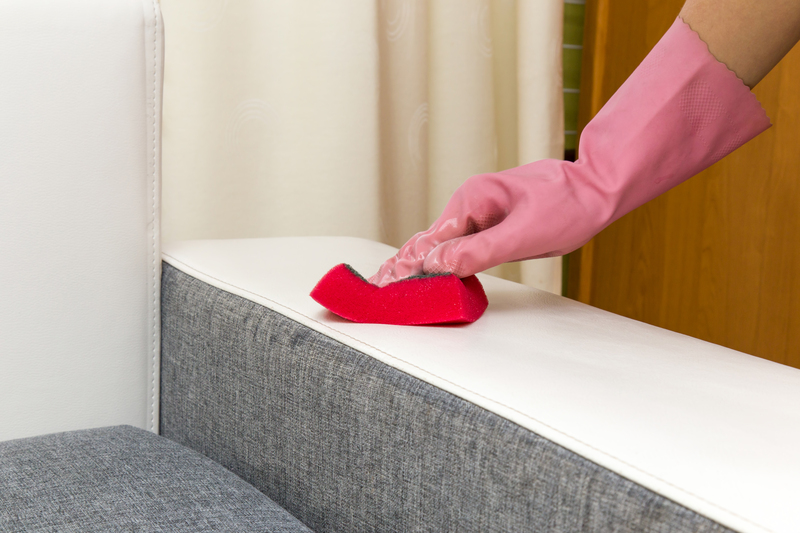Improving Indoor Air Quality: A Smart Investment
Posted on 26/09/2025
Improving Indoor Air Quality: A Smart Investment
Indoor air quality is a crucial factor affecting health, comfort, and productivity. With people spending up to 90% of their time indoors, the air inside homes and workplaces directly affects well-being. Are you wondering why so many homeowners and businesses are investing in better indoor air quality? Let's dive into the significance of indoor air quality improvement and explore why it's among the wisest investments you can make for yourself, your family, or your employees.
Understanding Indoor Air Quality (IAQ)
At its core, indoor air quality (IAQ) measures the cleanliness and healthiness of the air inside buildings. IAQ can be influenced by a combination of pollutants, ventilation, humidity, and other environmental factors. The main sources of indoor pollution include dust, volatile organic compounds (VOCs), mold, bacteria, pet dander, and outdoor pollutants that find their way inside.
Subpar IAQ can cause or exacerbate respiratory problems, allergies, headaches, fatigue, and even serious chronic conditions. Clearly, enhancing air quality indoors is not just about comfort; it directly impacts health and quality of life.

Why Improving Indoor Air Quality Is a Wise Investment
-
Health Benefits:
Breathing clean air reduces the risk of respiratory illnesses, such as asthma and allergies. It also minimizes the chances of developing long-term conditions related to pollution exposure, such as heart disease. -
Increased Productivity:
Employees working in environments with excellent indoor air quality are more alert, focused, and productive. Owners benefit from reduced employee sick days and improved morale. -
Property Value Enhancement:
Homes and commercial spaces that highlight their advanced IAQ features are more attractive to buyers and renters. -
Energy Efficiency:
Many technologies aimed at improving indoor air also contribute to better energy usage, delivering long-term savings. -
Peace of Mind:
Knowing your space has the best air possible brings reassurance, especially for families with children, elderly members, or anyone with pre-existing health issues.
Common Indoor Air Quality Problems
1. Volatile Organic Compounds (VOCs)
VOCs are emitted from products like paints, cleaning agents, adhesives, and even furniture. Inhaling them can irritate the eyes, nose, and throat, and in extreme cases, affect the liver and kidneys.
2. Mold and Mildew
High humidity, poor ventilation, or water damage create perfect environments for mold growth. Spores can trigger asthma attacks, allergies, and other respiratory problems.
3. Particulate Matter
Dust mites, pet dander, pollen, and tiny airborne particles accumulate easily in carpets, upholstery, and HVAC filters. Air quality improvement includes efficiently removing these particles to prevent aggravated allergy symptoms.
4. Carbon Monoxide (CO)
Faulty gas appliances, fireplaces, and even some heating systems can leak CO--a dangerous, odorless gas that can cause dizziness, headaches, and at high levels, death. Investing in CO detectors is essential for safety.
5. Poor Ventilation
An inadequately ventilated space fails to expel indoor pollutants or bring in fresh air, resulting in stale, pollutant-laden environments.
Smart Solutions for Improving Indoor Air Quality
Improving indoor air quality doesn't have to be complicated. Modern technology and smart practices make it easier than ever. Here are the most effective strategies to consider:
1. Air Purifiers: Advanced Filtration Technologies
- HEPA Filters: Capture 99.97% of particles as small as 0.3 microns, including pollen, dust mites, and some bacteria.
- Activated Carbon Filters: Absorb odors and VOCs, improving overall air freshness.
- UV-C Light Air Purifiers: Use ultraviolet light to kill bacteria, viruses, and mold spores.
- Smart Air Purifiers: Integrate with home automation systems, monitor pollutant levels in real-time, and adjust filtration accordingly.
2. Enhanced Ventilation Systems
Mechanical ventilation, such as HRVs (heat-recovery ventilators) or ERVs (energy-recovery ventilators), efficiently exchange indoor and outdoor air while minimizing energy loss. Properly designed ventilation can reduce indoor pollutant concentrations and control humidity levels.
3. Smart Thermostats and Humidity Control
Modern smart thermostats monitor humidity, temperature, and air exchange, maintaining indoor conditions within optimum ranges. Humidity controllers prevent mold and dust mite proliferation by keeping moisture in check.
4. Green Building Materials and Non-Toxic Products
- Use low- or zero-VOC paints, adhesives, and finishes.
- Opt for natural, non-allergenic flooring and fabrics.
- Choose furniture and cabinetry with minimal off-gassing.
These steps drastically minimize the introduction of harmful chemicals into your environment.
5. Smart Monitoring Devices
Invest in smart indoor air quality monitors that provide real-time feedback on pollutants, humidity, and temperature. These devices alert you when levels are unsafe, enabling prompt action.
6. Routine Cleaning and Maintenance
- Change or clean HVAC filters regularly.
- Ensure ducts and vents are free from mold and debris.
- Keep surfaces, curtains, and carpets clean to reduce dust buildup.
Routine care is crucial for long-term indoor air quality improvement.
The Financial Return on Investing in Indoor Air Quality
Many people wonder if the cost of upgrading HVAC systems, ventilation, and air purification equipment is worth it. The answer is a resounding yes. Let's break down why:
- Fewer Sick Days: Improved air means healthier workers and children, resulting in less time lost to illness.
- Reduced Healthcare Expenses: Fewer trips to the doctor and fewer medications for allergies or asthma translate to tangible savings.
- Boost in Property Value: Better indoor air makes homes more marketable and can increase resale value.
- Lower Energy Bills: Efficient ventilation and filtration systems often lead to reduced heating and cooling costs.
Over time, these benefits can add up, making your initial investment not just a wise expenditure but a long-term cost saver and enhancer of life quality.
Indoor Air Quality in Modern Smart Homes
As technology evolves, the integration of smart indoor air quality systems in homes and businesses is becoming more mainstream. Smart home tools now allow real-time tracking and control of air cleanliness, temperature, and humidity from smartphones or voice assistants.
- Integrated HVAC Controls: Adjust settings based on current environmental metrics.
- Automated Air Purification: Systems activate when air quality drops below set thresholds.
- Remote Monitoring: Receive instant notifications about potential issues while at work or traveling.
These innovations make it easier than ever to achieve optimal air quality--demonstrating that investing in air quality is both practical and forward-thinking.
Indoor Air Quality and Well-being: A Healthier Future Starts Indoors
The World Health Organization has repeatedly highlighted the risks of poor indoor air quality, particularly in densely populated urban areas. Children, the elderly, and those with compromised immune systems are most at risk. By investing in superior indoor air quality solutions, you create a safer, more comfortable space for everyone.
Moreover, research shows direct links between improved IAQ and better cognitive function, quality sleep, and overall mood. Clean air is not a luxury; it is a fundamental pillar of a healthy life.

Simple Steps to Instantly Enhance Your Indoor Air Quality
- Open windows periodically to let in fresh air.
- Introduce indoor plants--but choose species known for their air-purifying qualities such as snake plants or peace lilies.
- Use exhaust fans in kitchens and bathrooms to remove moisture and odors.
- Avoid smoking indoors.
- Store chemicals and paints in sealed, ventilated spaces.
Making these small changes today can kickstart your journey to a healthier home.
Conclusion: Indoor Air Quality Improvement Pays Off
Improving indoor air quality is far more than an aesthetic choice--it's a smart investment in health, comfort, productivity, and long-term property value. Whether you're a homeowner seeking to protect your family or a business owner striving for higher productivity and well-being, the rewards of optimizing indoor air cleanliness are clear.
By adopting advanced air purification, intelligent ventilation, and regular maintenance, you can dramatically improve the environment you live or work in. In today's world, where air pollution is an ever-present topic, taking control of your indoor environment demonstrates both responsibility and vision.
Don't wait for health issues to arise--choose to enhance your indoor air quality now. It's a decision that will benefit you and everyone who steps inside your door for years to come.




